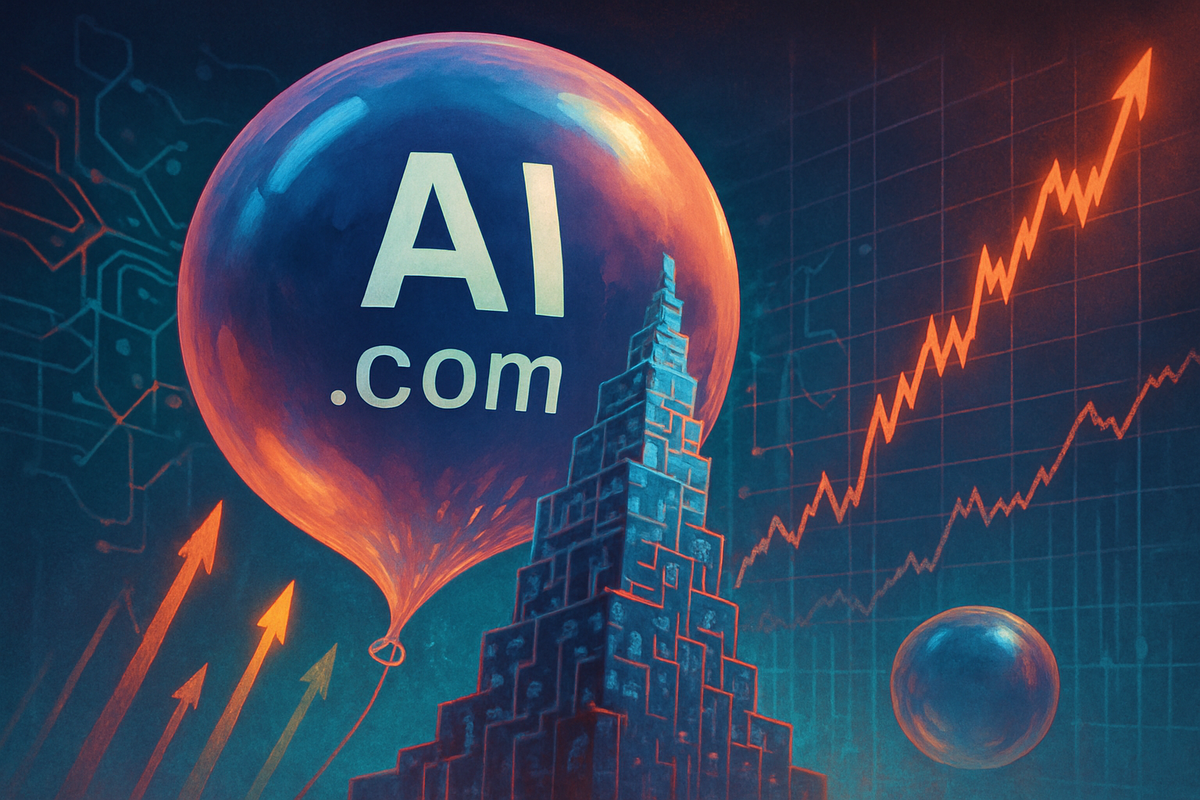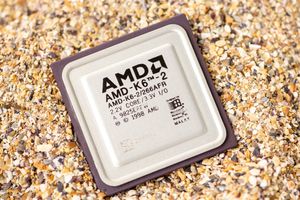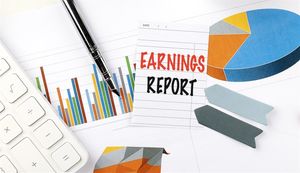
October 7, 2025 – The global financial markets are buzzing with a familiar, yet unsettling, energy. As technology stocks continue their relentless ascent, largely propelled by the transformative promise of Artificial Intelligence, a growing chorus of analysts and investors are raising a cautionary flag: are we on the precipice of an AI-driven market bubble, eerily reminiscent of the dot-com bust of the late 1990s? This question looms large over Wall Street and beyond, as unprecedented valuations for AI startups and established tech giants alike spark both excitement and trepidation.
The current landscape sees the tech sector flourishing, with significant growth in AI-related infrastructure, software, and semiconductor demand. Companies like Nvidia (NASDAQ: NVDA), Microsoft (NASDAQ: MSFT), and AMD (NASDAQ: AMD) are reporting stellar revenues, driven by an insatiable appetite for AI capabilities. However, this bullish momentum is shadowed by concerns over speculative hype, massive infrastructure spending, and sky-high valuations that many fear are detached from fundamental profitability, stirring memories of a previous era where dreams of digital riches turned into a harsh reality for countless investors.
The AI Gold Rush: A Market in Overdrive
The current market dynamic is characterized by an aggressive pursuit of AI dominance, leading to what some are calling an "industrial bubble." Since the launch of ChatGPT, AI-related stocks have become significant contributors to the S&P 500's returns, earnings growth, and capital spending. Global IT spending is projected to grow by 9.3% in 2025, with worldwide spending on AI expected to increase at a compound annual growth rate of 29% from 2024 to 2028. The Nasdaq index has even surpassed the 25,000 mark, indicating robust performance in the tech sector.
This surge is underpinned by several key developments. Companies are pouring billions, and in some cases trillions, into building AI infrastructure. OpenAI, for instance, has committed to a "trillions" dollar AI infrastructure plan, echoing the excessive fiber-optic network buildout that preceded the dot-com bust. The demand for generative AI chips is fueling double-digit revenue growth in the semiconductor industry for 2025, with companies like Taiwan Semiconductor Manufacturing (NYSE: TSM) outperforming even Nvidia (NASDAQ: NVDA) in terms of year-to-date stock appreciation.
The timeline leading to this moment is relatively short but impactful. The rapid adoption and widespread attention garnered by generative AI models, particularly since late 2022, ignited a fervent investment wave. This led to a dramatic re-rating of tech stocks, with companies pivoting to emphasize their AI capabilities. Key players involved range from chip manufacturers like Nvidia (NASDAQ: NVDA) and AMD (NASDAQ: AMD), cloud service providers such as Microsoft (NASDAQ: MSFT) and Amazon (NASDAQ: AMZN), to AI developers like OpenAI and Palantir (NYSE: PLTR). Initial market reactions have been a mix of euphoria and caution, with significant capital flowing into AI ventures, yet with prominent figures like Amazon (NASDAQ: AMZN) Chairman Jeff Bezos and hedge fund billionaire Ken Griffin openly discussing the "industrial bubble" and "echoes of the dot-com bubble."
Navigating the AI Wave: Potential Winners and Losers
In this high-stakes AI-driven market, the distinction between sustained growth and speculative excess will determine the ultimate winners and losers. Companies with genuine technological breakthroughs, robust business models, and clear paths to profitability stand to gain immensely, while those with inflated valuations based solely on AI "hype" face significant risks.
Potential Winners:
- AI Infrastructure Providers: Companies like Nvidia (NASDAQ: NVDA) and AMD (NASDAQ: AMD) are clear frontrunners, benefiting from the foundational demand for AI chips and hardware. Nvidia's data center revenue was up 56% year-over-year in Q2, contributing to a staggering $4.5 trillion market capitalization. Taiwan Semiconductor Manufacturing (NYSE: TSM), as the world's largest semiconductor fabricator, is also poised for continued success as the primary producer of these crucial components.
- Cloud Service Giants: Microsoft (NASDAQ: MSFT), Amazon (NASDAQ: AMZN) (via AWS), and Google (NASDAQ: GOOGL) (via Google Cloud) are deeply entrenched in the AI ecosystem, offering the computational power and platforms necessary for AI development and deployment. Microsoft's "Intelligent Cloud" segment, growing 26% year-over-year in Q4 fiscal 2025, exemplifies this trend. Their established customer bases and diverse revenue streams provide a buffer against market volatility.
- Software and Application Innovators with Clear ROI: Companies that successfully integrate AI to create tangible value for businesses and consumers, demonstrating quantifiable returns on investment, will thrive. This includes firms developing specialized AI software, automation tools, and industry-specific AI solutions that move beyond pilot projects to widespread adoption.
Potential Losers:
- Overvalued AI Startups with Unproven Business Models: Many early-stage AI ventures are attracting substantial funding based on speculative hype rather than immediate profitability. Some are valued at $400 million to $1.2 billion per employee, with little to no revenue. If the market corrects, these companies, reminiscent of many dot-com busts, could see their valuations plummet or face existential funding crises.
- Companies with "AI Washing" Strategies: Firms that merely attach an "AI label" to existing products or services without genuine innovation or integration are vulnerable. Investors are increasingly scrutinizing AI claims, and a lack of substance will likely lead to a loss of confidence and stock depreciation.
- Traditional Businesses Slow to Adapt: Industries and companies that fail to embrace AI to enhance efficiency, innovate products, or improve customer experience risk being outcompeted. While not directly "losers" in a bubble burst, their competitive disadvantage will widen, making them less attractive to investors over the long term.
Companies like Palantir (NYSE: PLTR), with a price-to-earnings ratio over 500, and OpenAI, valued at $500 billion despite not yet being profitable, represent the more speculative end of the spectrum, drawing direct comparisons to the most audacious dot-com investments. Their future performance will be a key indicator of whether the current AI fervor is a sustainable revolution or a fleeting bubble.
Broader Implications and Historical Echoes
The re-emergence of dot-com fears in the AI era carries significant wider implications, touching upon industry trends, regulatory landscapes, and historical economic parallels. This event is not merely a tech sector phenomenon but a potential bellwether for the entire market.
This AI surge fits into broader industry trends of increasing digitalization and automation. AI is not just another technology; it's a general-purpose technology with the potential to reshape every industry, from healthcare to manufacturing. The current concentration of market value in the information technology sector, now exceeding 33% of the S&P 500, mirrors the dot-com bubble's peak, raising concerns about market breadth and systemic risk. If the AI rally remains confined to a few mega-cap tech companies, it could create a fragile market susceptible to sharp corrections.
The potential ripple effects on competitors and partners are substantial. Non-AI-centric tech companies may find themselves at a competitive disadvantage, struggling to attract talent and investment. Partners in the supply chain, particularly those providing specialized components or services to the AI industry, will experience amplified volatility – booming during the good times, but facing significant headwinds if the bubble bursts. The "circular" AI ecosystem, exemplified by Nvidia's investment in OpenAI, which then purchases Nvidia's chips, also raises questions about market health and potential self-reinforcing, unsustainable growth patterns.
Regulatory or policy implications are also coming into focus. Governments worldwide are grappling with how to regulate AI, focusing on ethics, data privacy, and market dominance. A perceived AI bubble could accelerate calls for stricter oversight, particularly regarding anti-competitive practices or financial stability risks posed by highly concentrated market capitalizations. The sheer scale of investment, like OpenAI's "trillions" dollar infrastructure plan, could also attract scrutiny regarding resource allocation and environmental impact.
Historically, the parallels to the dot-com bubble are striking. Both periods saw unprecedented technological advancement, speculative investment in nascent technologies, and a significant disconnect between valuations and immediate profitability for many new entrants. However, there are crucial differences: many of today's leading AI companies, the "Magnificent Seven," are established, profitable entities with strong balance sheets, unlike the often-unprofitable startups of the late 90s. Furthermore, AI adoption is occurring at an unprecedented pace, and the current buildout is not primarily debt-fueled. Yet, the warnings from figures like Amazon (NASDAQ: AMZN) Chairman Jeff Bezos and hedge fund billionaire Ken Griffin underscore that while the context may differ, the underlying human tendency towards speculative excess remains constant.
What Comes Next: Navigating the AI Frontier
The trajectory of the AI-driven market presents a spectrum of possibilities, ranging from continued transformative growth to a sharp, painful correction. Understanding these potential scenarios is crucial for businesses, investors, and policymakers alike.
In the short term, continued market volatility is highly probable. The current environment is characterized by rapid technological advancements, intense competition, and significant capital flows. We could see further consolidation in the AI sector, with larger, established tech giants acquiring promising startups to bolster their AI capabilities. There's also a potential for a "shake-out" among less differentiated AI companies, as investors demand clearer pathways to profitability and tangible returns on investment. The macroeconomic environment, particularly interest rate policies from central banks, will continue to play a critical role in shaping investor appetite for risk assets like tech stocks.
Long-term possibilities include the sustained integration of AI across nearly all sectors of the global economy, driving unprecedented productivity gains and creating entirely new industries. This scenario hinges on AI moving beyond pilot projects to deliver material ROI, broadening the rally beyond the largest tech companies. However, if the current valuations prove unsustainable, a significant market correction could occur, leading to a period of retrenchment in AI investment, similar to the "AI winter" that followed earlier periods of excessive hype.
Strategic pivots and adaptations will be required across the board. Companies heavily invested in AI will need to demonstrate clear value propositions and disciplined capital allocation. Those not yet fully embracing AI will need to accelerate their adoption strategies to remain competitive. Investors will need to shift from a purely speculative mindset to one focused on fundamental analysis, seeking out companies with sustainable competitive advantages and proven execution. Market opportunities may emerge in niche AI applications, ethical AI development, and AI infrastructure services that cater to specific industry needs rather than generalized hype. Challenges will include managing the ethical implications of AI, addressing job displacement concerns, and navigating an evolving regulatory landscape.
Potential scenarios include a "soft landing" where AI growth gradually normalizes to more sustainable levels, a "hard landing" involving a significant market crash akin to the dot-com bust, or a "prolonged plateau" where AI development continues but market enthusiasm wanes due to unmet expectations. The outcome will largely depend on whether AI can consistently deliver on its immense promise and if market participants exercise greater prudence in valuation.
A Cautious Optimism in an AI-Driven World
As of October 2025, the financial markets find themselves at a critical juncture, grappling with the immense potential of Artificial Intelligence alongside the cautionary echoes of past speculative bubbles. The current environment is defined by robust growth in the tech sector, fueled by AI, yet tempered by legitimate concerns over soaring valuations, speculative investments, and a concentration of market value reminiscent of the dot-com era.
The key takeaway is that while AI undoubtedly represents a transformative technological wave, the market's current enthusiasm carries elements of irrational exuberance. Established tech giants like Nvidia (NASDAQ: NVDA), Microsoft (NASDAQ: MSFT), and AMD (NASDAQ: AMD) are demonstrating strong fundamentals and genuine revenue growth from AI. However, the valuations of many early-stage AI startups and even some larger players, like Palantir (NYSE: PLTR) and OpenAI, suggest a significant premium based on future potential rather than current profitability. The comparison to the dot-com bubble is not a perfect one, given the profitability of today's tech leaders and the rapid adoption of AI, but the warnings from seasoned investors should not be ignored.
Moving forward, the market will likely be characterized by continued innovation in AI, but also by increased scrutiny on financial metrics. Investors should watch for several key indicators in the coming months:
- Demonstrated ROI from AI: The shift from pilot projects to quantifiable business value will be crucial.
- Market Breadth: Whether the AI rally expands beyond the "Magnificent Seven" to a broader range of companies and sectors.
- Regulatory Developments: New policies regarding AI ethics, data, and market competition could impact growth trajectories.
- Interest Rate Environment: Central bank decisions will influence the cost of capital and investor risk appetite.
- Profitability vs. Potential: A renewed focus on profitable growth over pure speculative potential for AI companies.
Ultimately, the long-term impact of AI is likely to be profoundly positive and transformative. However, the path to realizing this potential may involve significant market corrections if the current pace of valuation outstrips the reality of AI's economic integration. Investors are advised to exercise caution, conduct thorough due diligence, and maintain a diversified portfolio, recognizing that while the AI revolution is real, the market's journey through it may not be without its speculative pitfalls.
This content is intended for informational purposes only and is not financial advice





